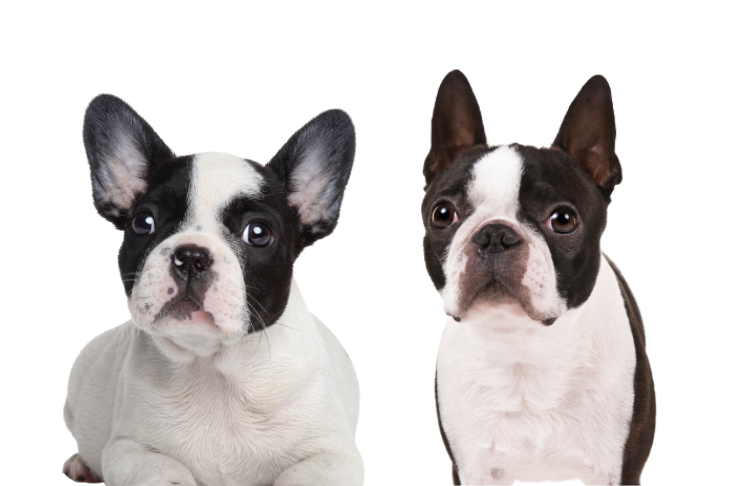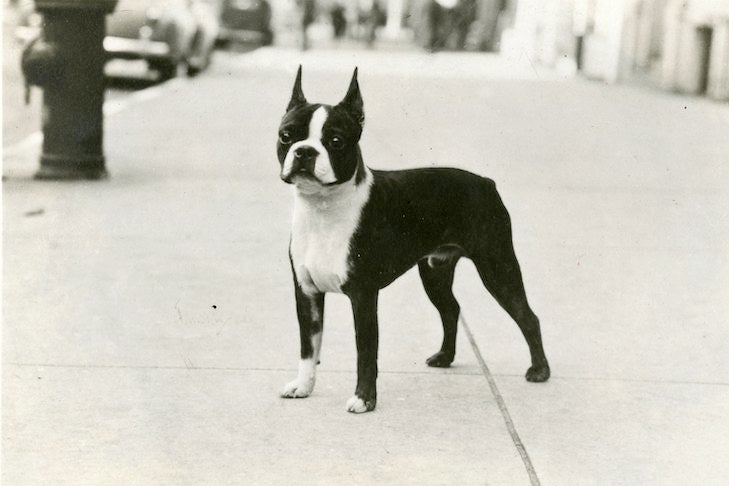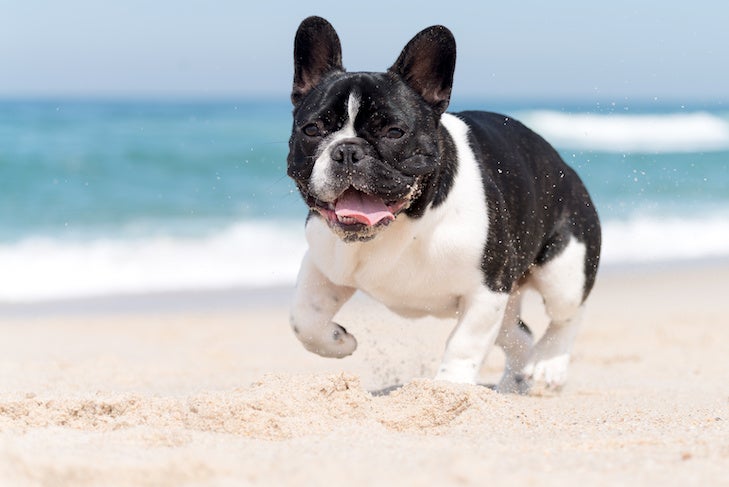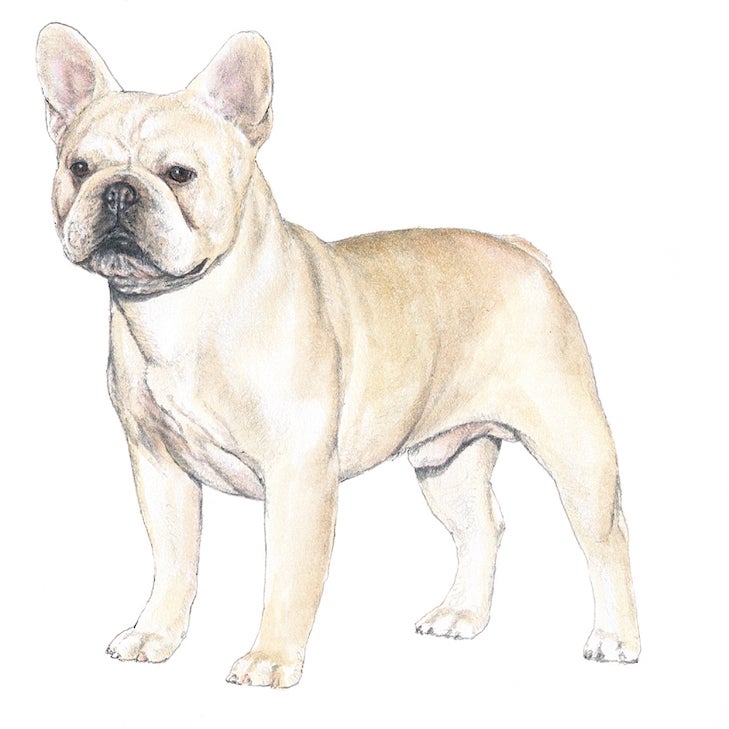
The Boston Terrier and French Bulldog are both adorable companions sharing fabulous ears and smooshy flat faces. These small and compact members of the Non-Sporting Group are both popular with city dwellers as they adapt well to an urban environment. But when you see them walking down the sidewalk, can you tell them apart? Although they share a passing resemblance, delve deeper and see where the fascinating differences lie.
Physical Differences
Thomas J. Davis, AKC Judge and mentor for the Boston Terrier Club of America, has been breeding and exhibiting Boston Terriers for 40 years. He says people often confuse the Boston Terrier and the French Bulldog, but he doesn’t understand why. Especially given that they have different side profiles, head types, ear shapes, and toplines. “The only similarities are that both have erect ears, and both are brachycephalic (flat-faced) breeds.”
Robin Stansell, Judges Education Chair for the French Bull Dog Club of America, has been showing and breeding French Bulldogs since 1991. He believes the two breeds could be confused if the Frenchie had markings like the Boston. But outside of color, he feels they can be easily distinguished as the Frenchie has more substance and heavier bone, a pear-shaped body, and a wider range of colors and markings. “The Boston Terrier must have the characteristic ‘tuxedo-like’ markings with a level topline and a double-tracking gait.”
- French Bulldog
- Ch. Calsen’s Best Regards, Boston Terrier. 1946
Shared Heritage
Because they are both smaller descendants of the Bulldog, the Boston and Frenchie share certain characteristics, like their sturdy compact bodies and short muzzles. According to Stansell, the Frenchie originated as a Toy Bulldog in England during the Industrial Revolution. When English lacemakers were replaced by mechanical weaving machines, many of them immigrated to France to find work. “The Toy Bulldogs were favored by these lacemakers as they were smaller and cheaper to maintain in the small tenements in France. There the dogs mixed with local breeds resulting in some physical changes in the breed including some with erect ears.”
Eventually, American businessmen met the breed in France and brought them home to New York. The little dogs with the “bat ears” gained popularity. Stansell explains, “When an English judge only selected Frenchies with the traditional ‘rose ear’ at the 1896 Westminster Kennel Club show, the Americans were distressed. In 1897, the French Bull Dog Club of America was formed and wrote the first breed standard, disqualifying ears other than the ‘bat ear.'”
The Boston’s origins are closer to home. Recognized in 1893 by the AKC, the Boston Terrier originated in the Boston, Massachusetts area. Davis explains that this truly American breed was originally a cross between an English Bulldog and the now-extinct White Terrier. “They were developed for a new smaller and more athletic fighting dog. Obviously, that did not happen and was a disappointment to the breeders of that time. The Boston Terrier is a loving and gentle breed.”
- French Bulldog runninga
- Boston Terrier running
Clowns and Companions
According to the French Bull Dog Club of America, French Bulldogs aren’t at all as stubborn as their reputation. Most of them do their utmost to please their humans and are trainable with the right motivation, which is usually food. There are Frenchies that successfully compete in Obedience, Rally, and Agility. And some even participate in Tracking, Coursing, or Herding! Not to mention how wonderful they are as therapy dogs.
Stansell says the French Bulldog is a joy to live with. “They are playful and love being with you. Given the opportunity, they will take charge of your activities as well as your bed! However, they may not want to share you with other dogs.”
The Boston Terrier Club of America describes Bostons as fast learners who do well in Obedience, therapy work, and dog sports like Agility, Flyball, and even weight pulling. But the job they do best is being your best friend. They were bred to be companions, so they require a lot of your time and attention.
Davis says, “Boston Terriers are not a dog to lie on the floor or sit in a corner. They always must be touching you – sitting on your lap, staring in your eyes, laying in your bed, cuddling next to you, sometimes on your pillow or under the covers.”
Now, whether you meet Stansell’s Frenchie, the happy little lovable clown in a small, muscular body, or Davis’s Boston, the lively and intelligent dog in the permanent tuxedo, you can tell them apart and appreciate their many differences.
- French Bulldog Illustrated Breed Standard
- Boston Terrier Illustrated Breed Standard







